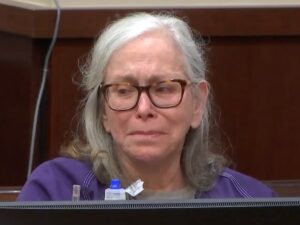An interesting article in the Guardian discusses the impressive drop in gun homicides in the Bay Area. As San Francisco and other cities experience an increase in wealth (my decidedly nonscientific index is the presence of Teslas on the streets) we are also experiencing dramatic waves of homelessness and abject poverty (the article estimates 30,000 homeless people in the Bay Area; a few years ago the conservative estimate for SF alone was almost 7,000). So how did we manage to reduce gun violence? The Bay Area has seen a considerable decline in gun homicide. The map in the article observes that the trend was most pronounced for “gentrifying cities”—San Francisco, Oakland, and Richmond. Homicide rates dropped modestly in other places. The only significant uptick was in Stockton, which is facing bankruptcy.
How did this happen? The article opines:
There’s early evidence that local violence prevention strategies – including a refocused, more community-driven “Ceasefire” policing strategy, and intensive support programs that do not involve law enforcement at all – were a “key change” contributing to these huge decreases.
One of these programs is Operation Advance Peace, which was adopted in Sacramento following its success in Richmond. Also, the legacy of creative, ethical, community-minded policing espoused by previous Richmond Chief of Police, Chris Magnus (now in Tucson, AZ) is to be credited with much of this decline.
A side note: One of the things I like about the Guardian article is that, as opposed to much of the academic writing on this, it did not shy away from at least examining whether the decline in gun violence might have something to do with changing demographics in the Bay Area. Before everyone leaps to chastise me for asking, “what about black-on-black crime?” let me remind you that African Americans are not only disproportionately the victims, but the perpetrators, of violent crime in the United States. It is possible to state this fact (which is what it is) without espousing an essentialist, racist explanation (“that’s just what they’re like” or any variant of this noxious ideology): is it any wonder that years of deprivation, neglect, animosity, awful role models, and indifference create a cultural climate in impoverished neighborhoods in which gun culture can flourish? Does it come as a shock to you that “high crime” areas also tend to be low-income, high-POC neighborhoods, and that policing there is a mix of punitive overenforcement and community-oriented underenforcement? The same structural racism that produces differential enforcement also produces differential criminality. Nothing to see or say here that hasn’t been noticed and said by radical realists or plain-old sociologists of delinquency. It’s not fancy, postmodern, or ideologically pure, and it won’t get me thousands of “likes” on twitter, but it does have the advantage of being true.
And no, the decline in homicides in the Bay Area is not exclusively (or even predominantly) because of white gentrification. The article explains:
In the past 10 years, tens of thousands of black residents have moved out of Oakland and San Francisco, as skyrocketing rents and housing prices have made the cities increasingly unaffordable. But in the region as a whole, the total number of black residents has remained steady, as the number of black residents living in the Bay Area’s outlying suburbs has increased, according to annual census estimates.
Keep in mind that homicide rates have gone down for the outlying suburbs as well, and you’ll see that this is not just a by-product of changing demographics.




No comment yet, add your voice below!